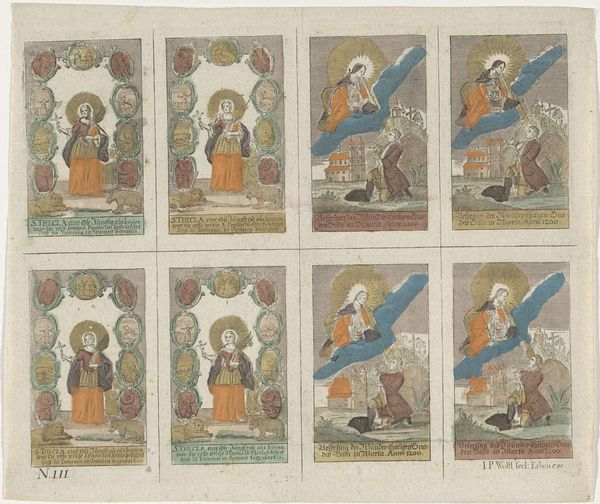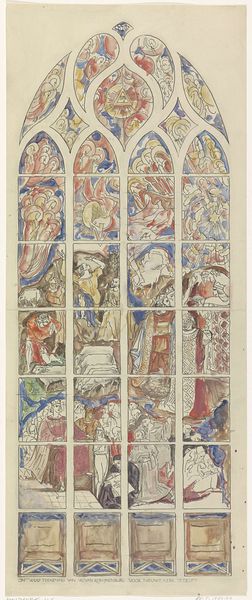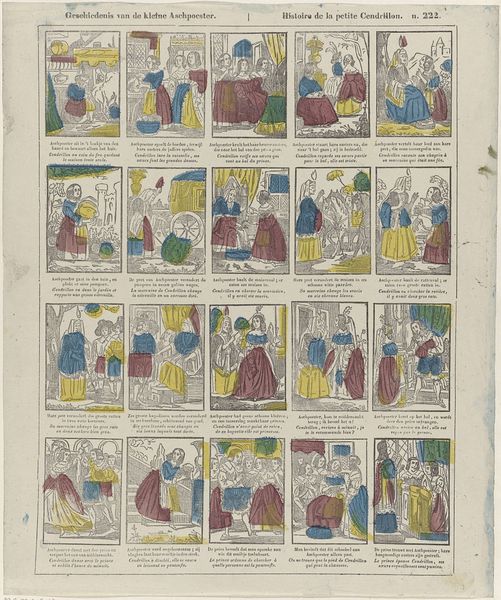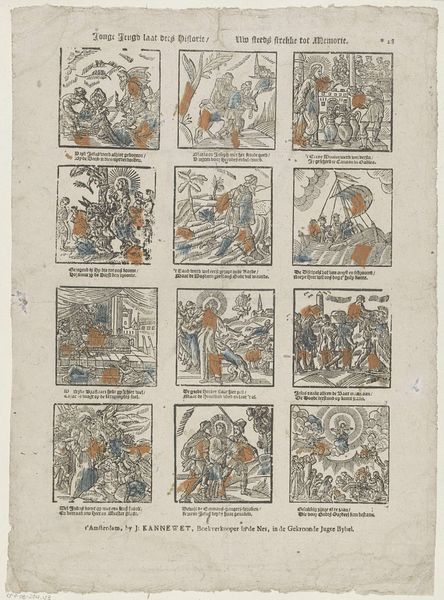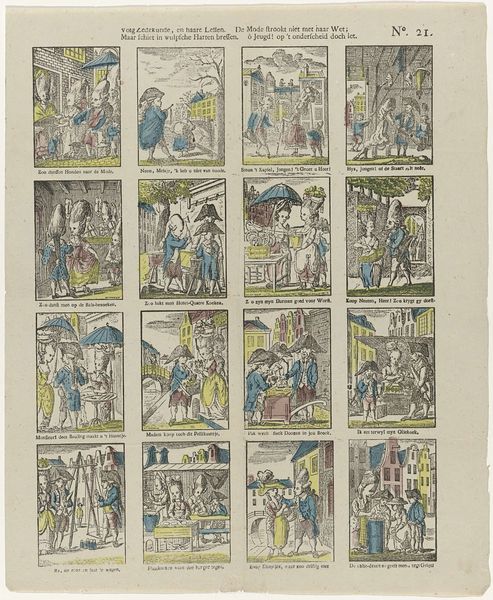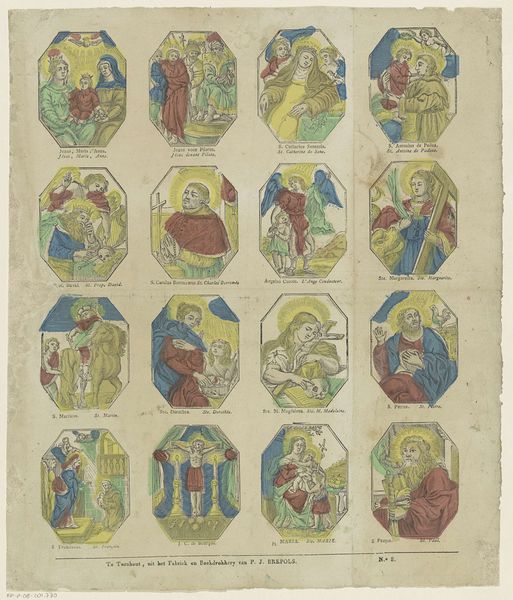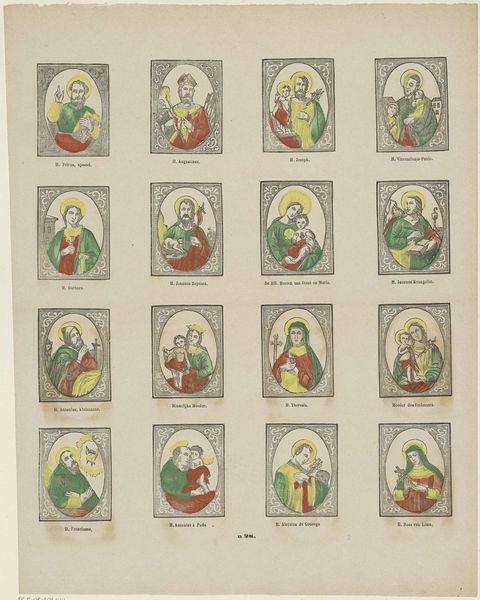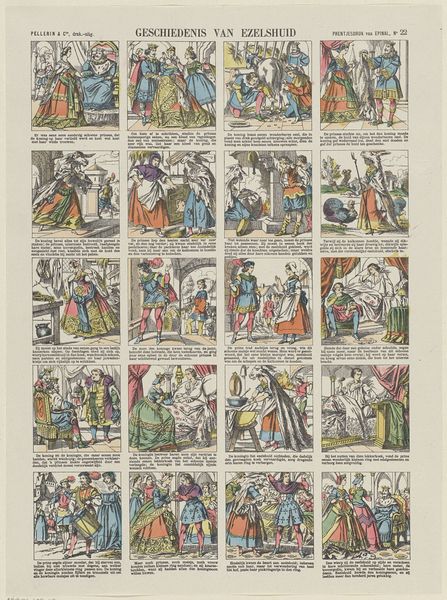
print, ink, pen, engraving
#
byzantine-art
#
narrative-art
# print
#
figuration
#
ink
#
folk-art
#
pen
#
history-painting
#
engraving
Dimensions: height 329 mm, width 382 mm
Copyright: Rijks Museum: Open Domain
Editor: Here we have a print from between 1800 and 1833, titled *Religieuze voorstellingen*, or "Religious Representations," by Philippus Jacobus Brepols, here at the Rijksmuseum. The sheet combines pen, ink, and engraving. I’m struck by the simple color palette; what draws your attention? Curator: The symbolic weight of these images resonates deeply, even now. Notice how each small scene, though simple, invokes powerful narratives – the life of saints, judgment, heaven, and hell. Each tiny scene pulls from centuries of cultural memory, relying on the viewer’s existing understanding of Christian iconography. Editor: So, it’s like a visual shorthand? Curator: Precisely! The artist uses familiar imagery—the halo, the cross, the grouping of figures—to evoke complex theological concepts and stories with a remarkable economy of line. What emotional response do you have to these symbols? Editor: Well, seeing ‘De Hel,’ or ‘Hell,’ brings a sense of foreboding, even though the colors are quite muted. And the crucifixion scene is especially poignant, even in this small format. I guess that’s the point: the symbols evoke powerful feelings despite their simplicity. Curator: Indeed. The recurring visual motifs of light and dark, ascent and descent, play out across each image, contributing to a sense of continuity but also stark division. This interplay reflects enduring human concerns with morality and destiny. Editor: I’ve definitely learned how artists can condense huge ideas into accessible images using symbols! Curator: And that these symbols can maintain their power across vast stretches of time. A worthwhile experience!
Comments
No comments
Be the first to comment and join the conversation on the ultimate creative platform.

